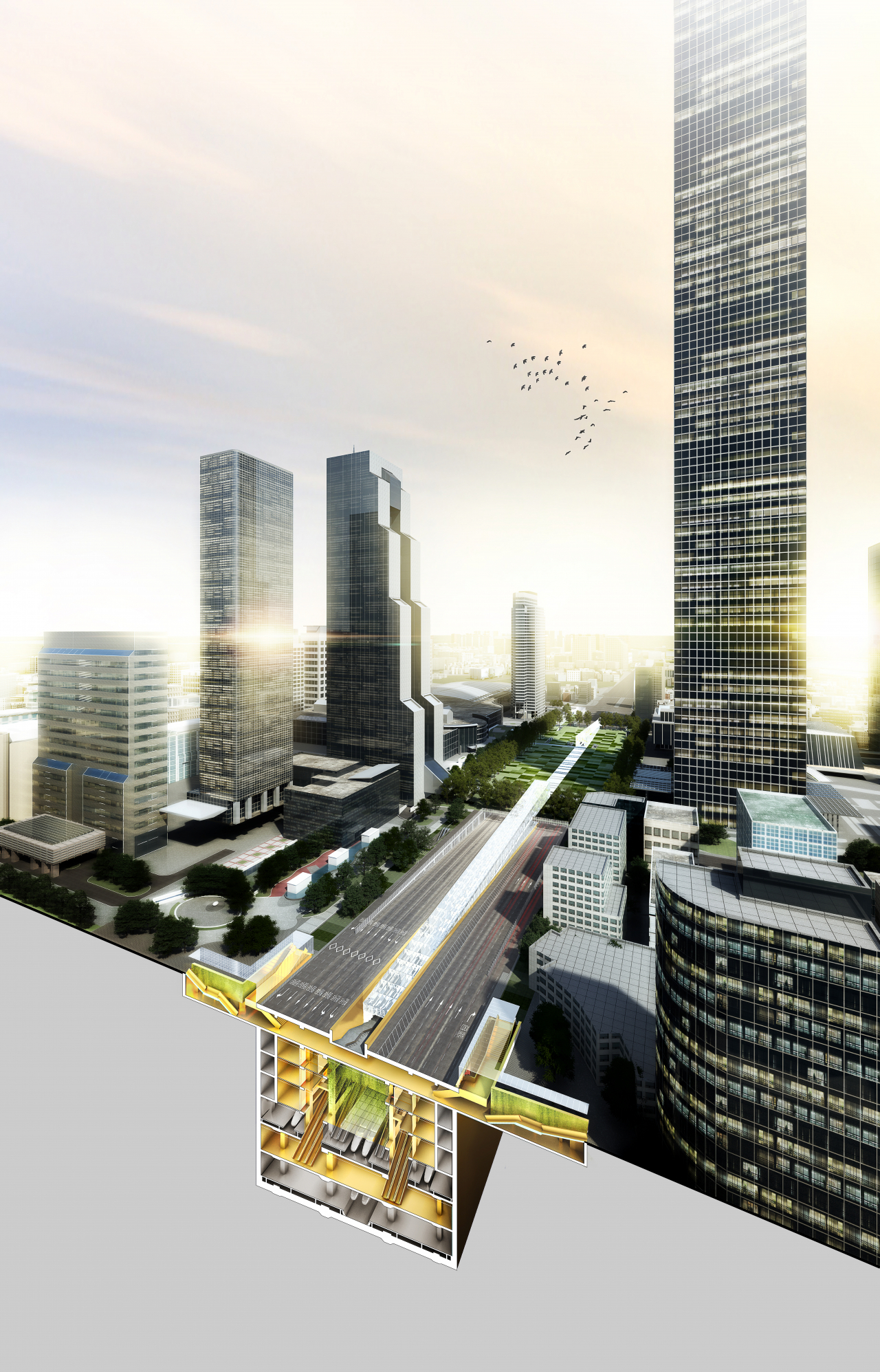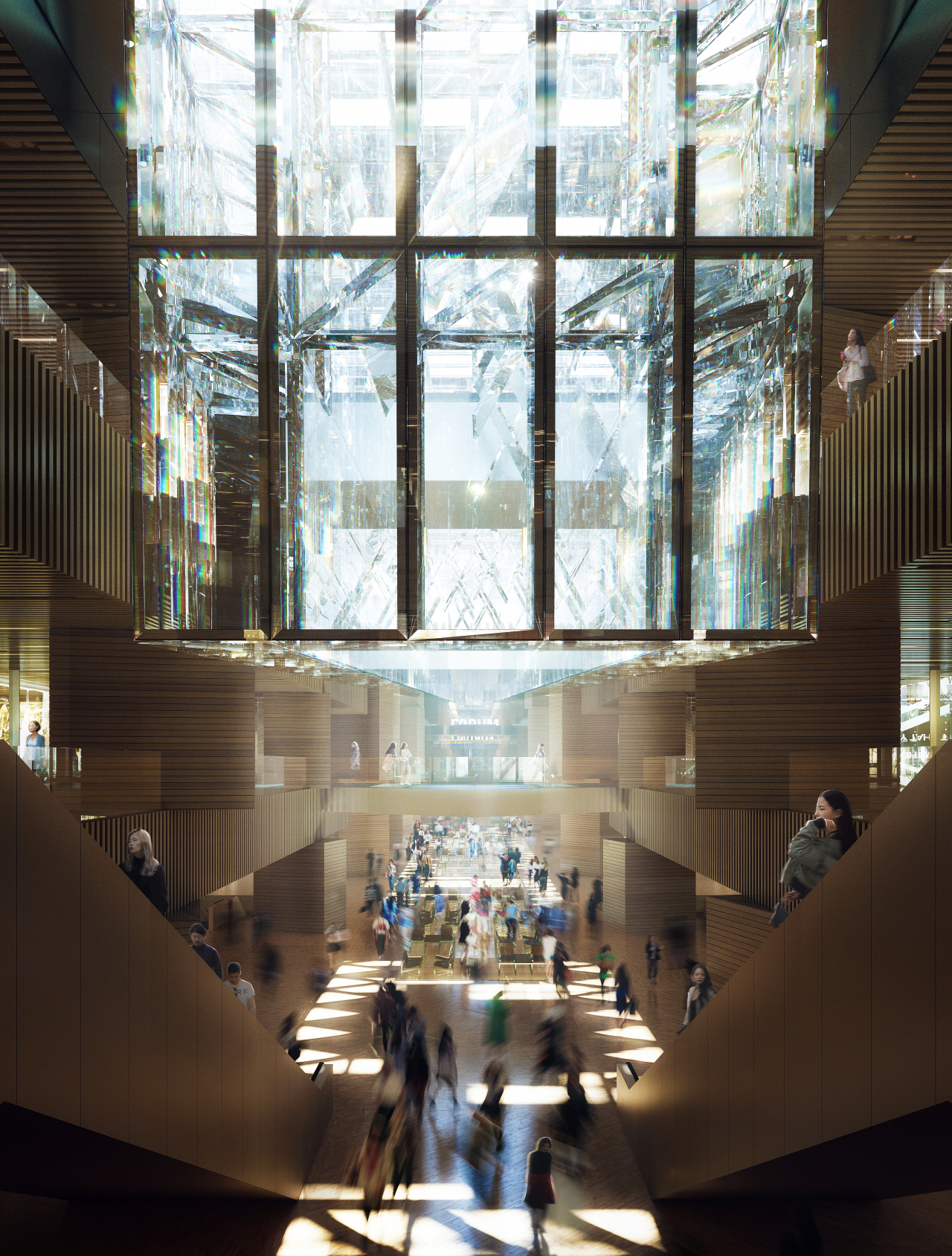Without light, Lightwalk will not be architecture: Dominique Perrault
By Park YunaPublished : Nov. 6, 2023 - 22:00

Gangnam Intermodal Transit Center is more than just an underground transportation station that will house three high-speed train lines and two subway stations in southern Seoul. For acclaimed architect Dominique Perrault, it is more of a social project.
“It is not a project to build an underground tunnel. Architecture is part of culture. The space should be a quality public space where people want to come, not a damp and dark underground space,” the architect said in an interview with The Korea Herald in Seoul on Oct. 28. He spoke in French with a Korean interpreter.
The project, which won an international competition in 2017, has been mired in trouble as its construction costs have far exceeded the city budget, which was set at around 600 billion won ($463 million), according to Seoul-based Junglim Architecture involved in the project. The total cost for the project, including the engineering works, is around 1.5 trillion won.
Although the primary function of the space is a transportation hub, the 167,000-square-meter underground station is also a public space, and will feature a large square on the ground, a huge exhibition space and a multitude of spaces for work. Some 600,000 people are expected to use the underground space daily.
For Perrault, the natural light that permeates the underground space is the key which will differentiate the underground space from other such spaces.

"Light is crucial to make people want to use the space. If natural light does not come through, it will be like we build the world’s largest transit station and bury it under the ground,” he said.
Expected to be completed in 2028, he named the project “Lightwalk,” stressing that the Gangnam International Transit Center will bring a change to the history of underground space in the city. The plan is for natural light to pour in through arcades made of glass.
The architect said that although the transit center is supposed to include a large-scale bus garage 20 meters underground, which is quite costly to build, he is doubtful if the public space would be able to have the bus garage so deep underground, considering the given construction budget.

The transit center will stretch along Yeongdong-daero, a major thoroughfare of the city south of the Han River, and will be connected to Coex, the city’s largest convention facility.
Perrault said it is important that the Seoul Metropolitan Government help people understand what kind of project is taking place during the construction phase as huge taxpayer money is being spent on it. Numerous complaints about the noise and traffic in the area have been filed since the construction began two years ago. The project is expected to be completed in April 2028.
“This is an interesting architecture project for people, and the city needs to put in effort to help them understand that the inconvenience is only for now (and is necessary) to make a positive change for people. Such a message could be put out at an exhibition on site or on electronic signs near the construction site,” he said.
He cited the example of an exhibition on an ongoing project he is directing in Paris.
The large-scale project, called “Grand Paris Express,” is a network of new rapid transit lines with 68 new metro stations, which will begin operating next year. The project involves some 70 architects, most of whom are French architects, paired with artists.
An exhibition for the project in Paris will kick off Wednesday, running through Feb. 6, 2024 at the Cite de l'Architecture.
“Such large-scale architecture projects draw a massive number of architects, creating a movement (in the architecture field),” Perrault said.

As the Korean cultural scene has grabbed global attention in music, films, art and food, the Korean architectural scene will also get the spotlight someday, Perrault noted. For example, Japan, which has a strong presence in the international architecture scene, became recognized for its architecture with the emergence of Metabolish, a postwar Japanese biomimetic architecture movement in the 1960s.
A national policy is also needed for local architects to grow, Perrault said.
“I think there should be a huge project for the local architects, rather than offering a single and scattered opportunity,” he said.
Perrault has begun working on his third project in Seoul called “Twin Peaks” in southern Seoul, which is a multipurpose building that will house residential spaces, hotels and commercial brands. He became well-known in Korea as the designer of the Ewha Campus Complex at Ewha Womans University in Seoul, which was completed in 2008.
When he met The Korea Herald in 2021 as the general director of the Seoul Biennale of Architecture and Urbanism, Perrault had likened the role of an architect to a conductor who controls a project, combining all of the information including landscape, technology, engineering and natural environment.
“The scale of the orchestra is getting bigger. If it was a chamber orchestra, now it has become a symphony orchestra,” he said, jokingly.
“But what you have to prioritize is the citizens, and as an architect, we need to think much more about climate change, too. The role of artificial intelligence will become more crucial as it will continuously provide and update information, which will be very helpful for many architects to aggregate up-to-date information,” he said.



















![[Today’s K-pop] Treasure to publish magazine for debut anniversary](http://res.heraldm.com/phpwas/restmb_idxmake.php?idx=642&simg=/content/image/2024/07/26/20240726050551_0.jpg&u=)